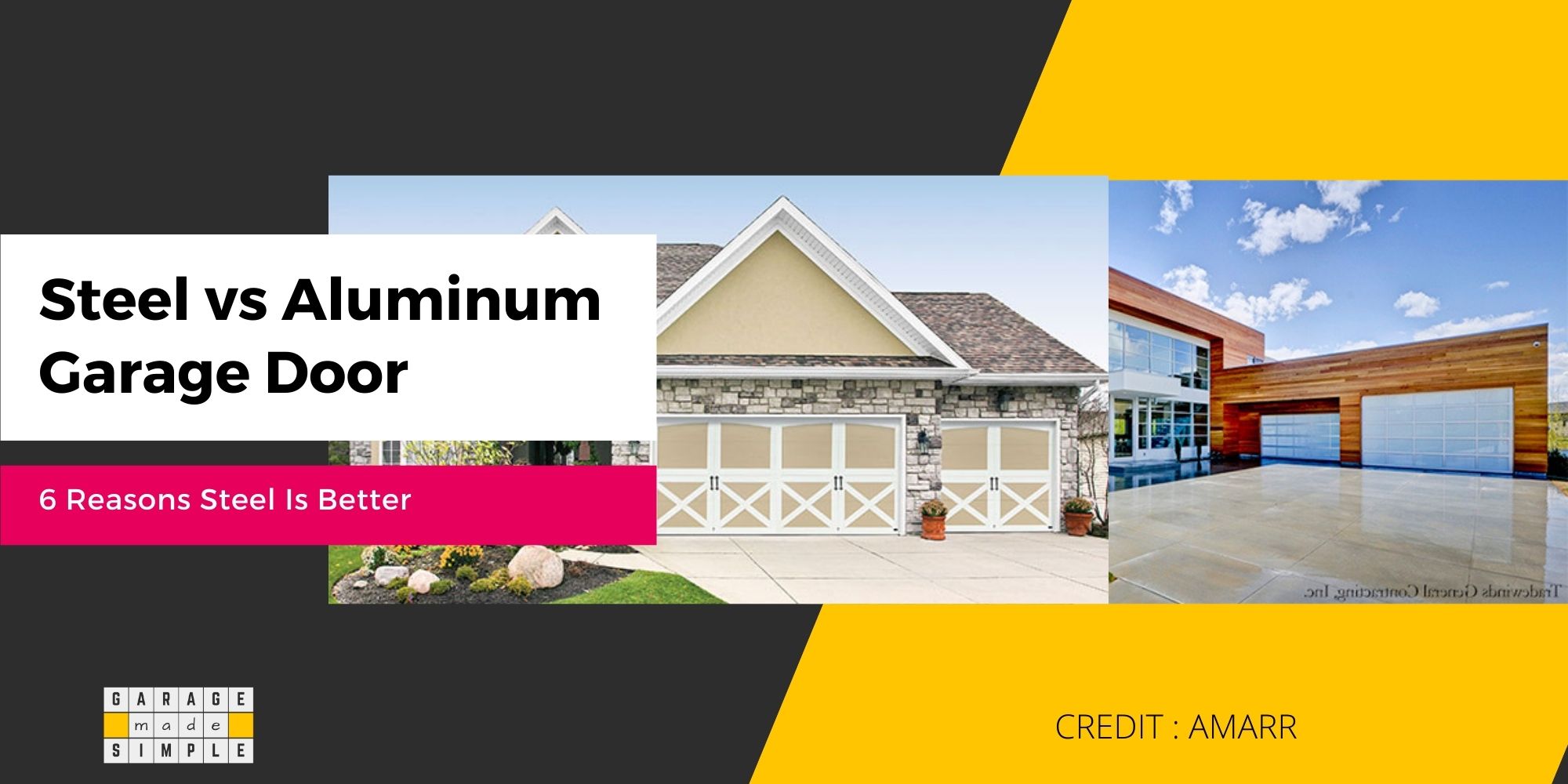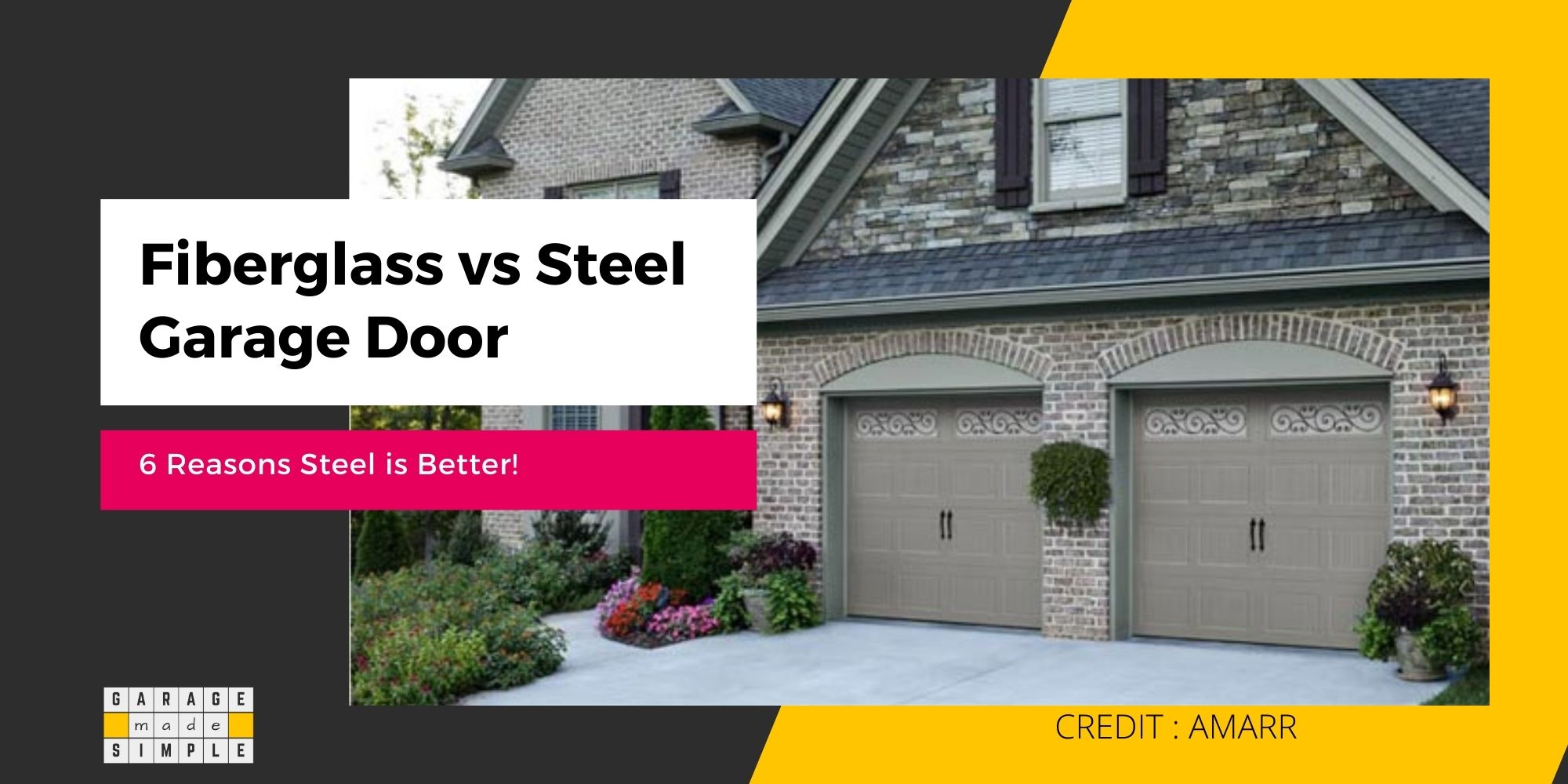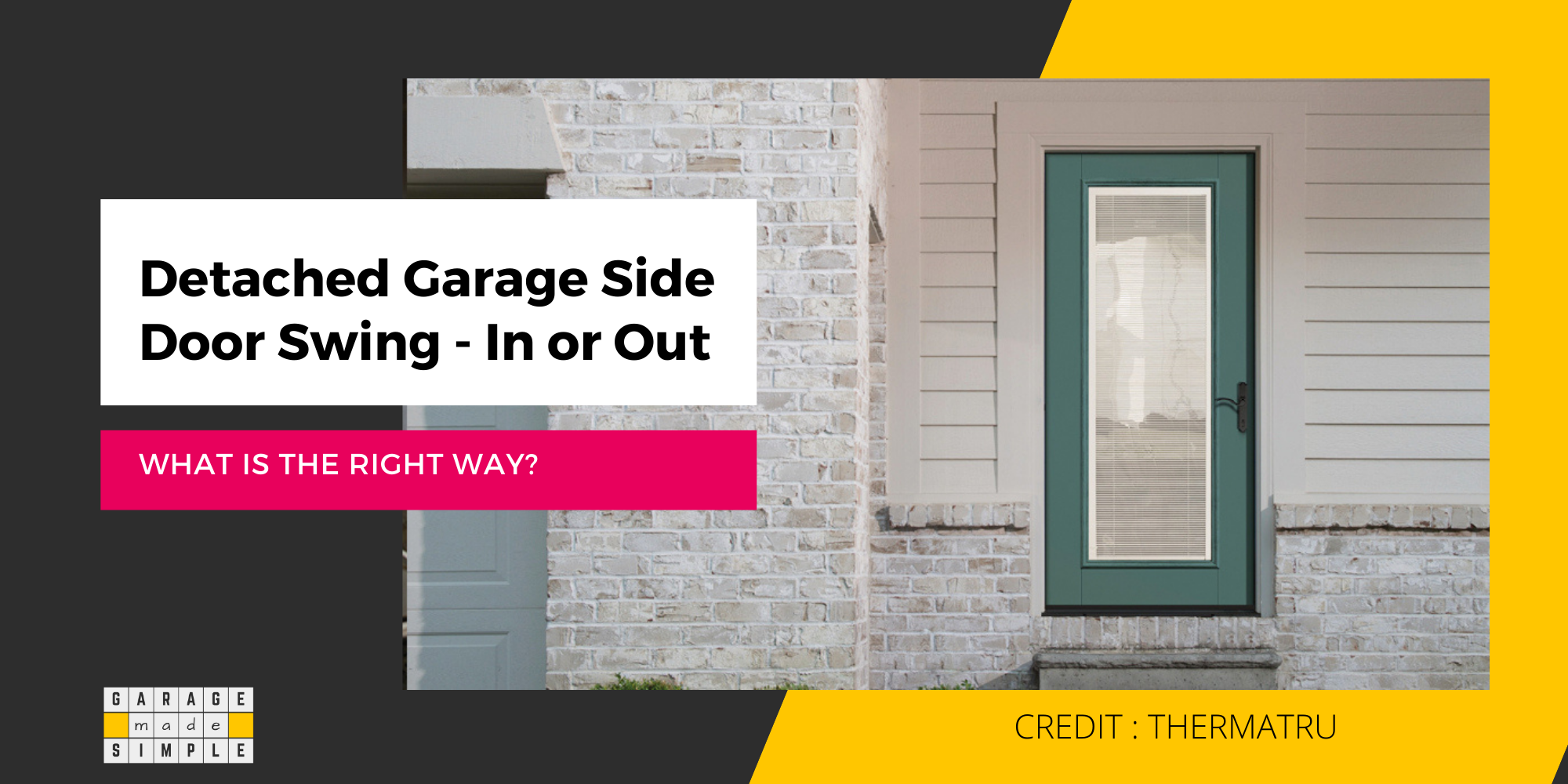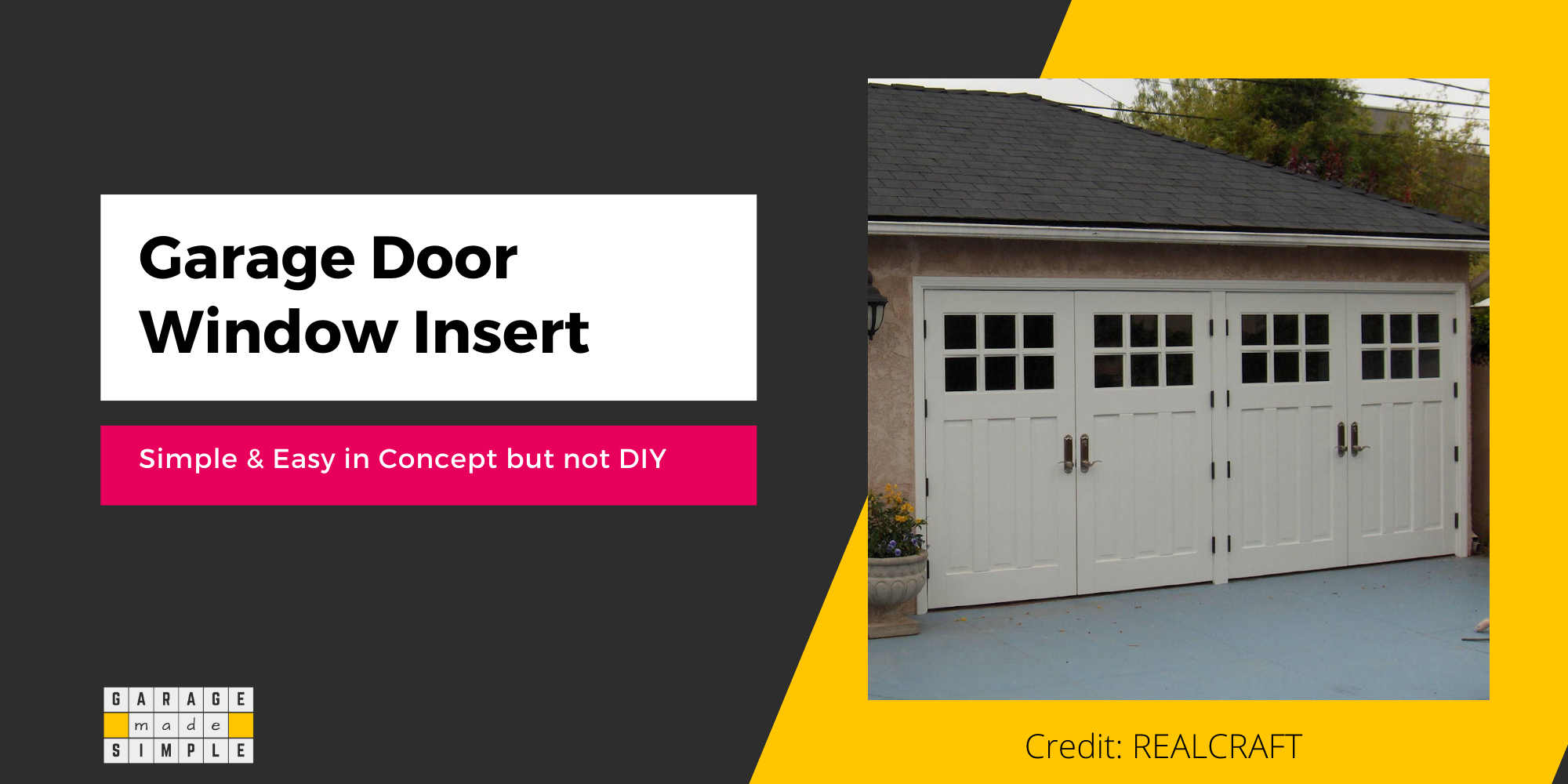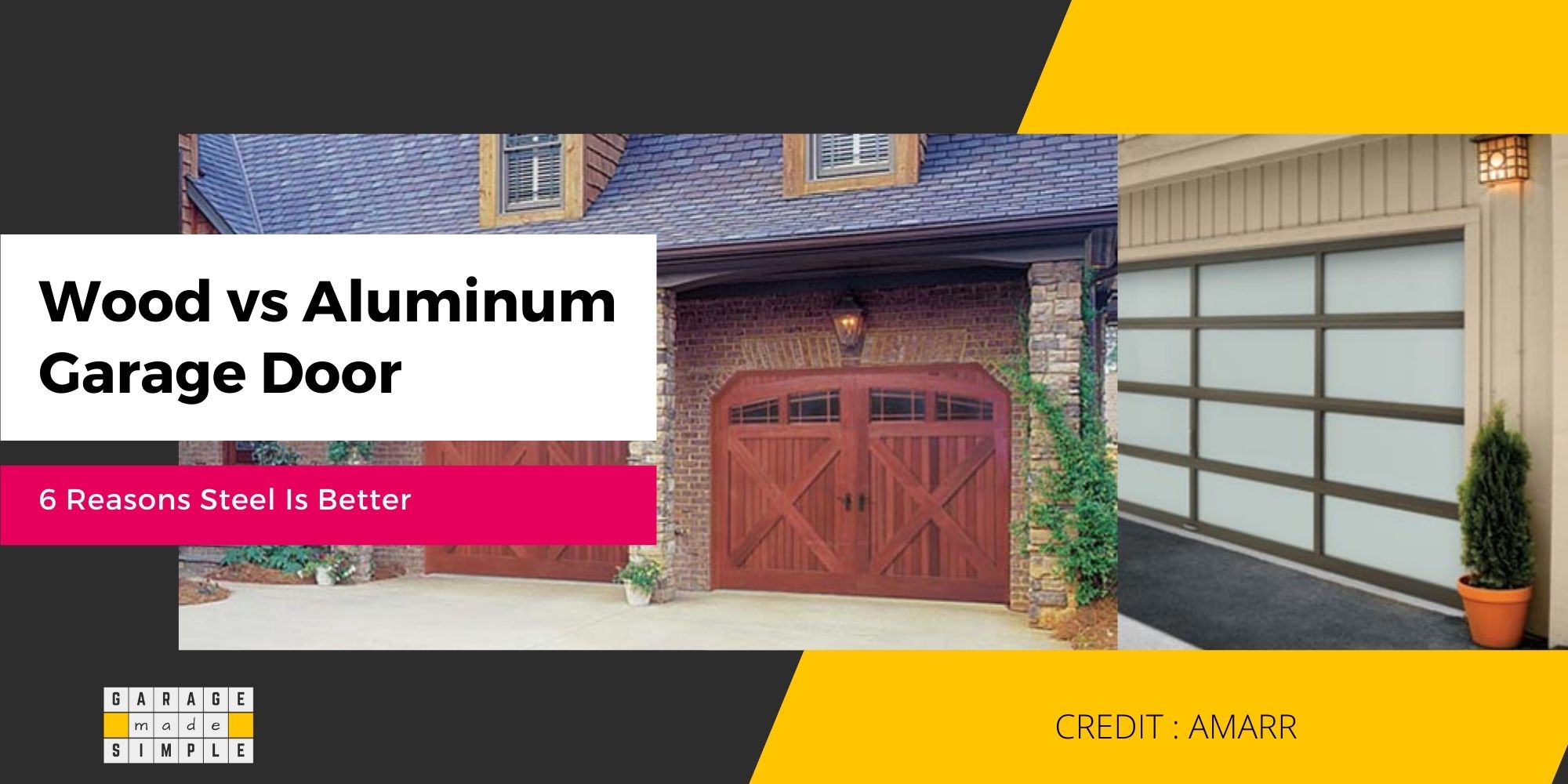Low Headroom Garage Door? A Comprehensive Guide
garagemadesimple.com is a participant in the Amazon Services LLC Associates Program, an affiliate advertising program designed to provide a means for sites to earn advertising fees by advertising and linking to Amazon.com . The website is also an affiliate of a few other brands.
Key Takeaways – Low Headroom Garage Door
- A Low headroom garage door is required when the garage has limited vertical clearance.
- Low headroom doors are ideal for garages with low ceilings. They help improve the aesthetics and optimize storage space.
- Modifications to the horizontal track, door springs, or the use of quick turn brackets can reduce headroom requirements.
- If headroom is extremely limited, you can consider alternatives like wall mount openers or non-overhead garage door types like slide to side, swing out, sliding barn style, or roll-up doors.
What is a Low Headroom Garage Door?
Are you building a New Garage or considering buying a new garage door for an Existing Garage? Not all garages fit standard dimensions of width, depth and height.
Have you given some thought to the height of your garage ceiling. In case the garage ceiling is not high enough, you will have to consider installing a Low Headroom Garage Door. Now what is a Low Headroom Garage Door?
The height of a standard garage door is 7’. However, you need an additional 12” to 18” clearance above the garage door top to accommodate the horizontal tracks and the torsion or extension springs.
You need a Low Headroom Garage Door, in case your garage does not have that clearance. A Low Headroom Garage Door is designed to fit into garages with limited vertical clearance.
When and Why do You Need a Low Headroom Garage Door?
You need a Low Headroom Garage Door in following scenarios:
- Limited Ceiling Height: Low headroom garage doors are ideal for garages with low ceilings or limited clearance above the opening. In situations where there isn’t enough room for a standard track system, a low headroom door is the perfect solution.
- Aesthetic Considerations: In some architectural designs or building layouts, maintaining a clean and unobtrusive appearance is crucial. Low headroom doors provide a sleeker and more compact profile compared to their standard counterparts.
- Space Optimization: For properties with limited space or cramped garage layouts, low headroom doors help maximize the available room. They allow for better utilization of the overhead space, creating additional storage or workspace options.
- Renovations and Retrofits: During garage renovations or upgrades, some homes might not have been originally designed with standard garage door clearances in mind. In such cases, low headroom garage doors offer a viable alternative without the need for major structural modifications.
- Architectural Constraints: Certain homes, especially older ones or historical structures, may have architectural constraints that make it difficult or impossible to install a traditional garage door system. Low headroom doors can often overcome these limitations.
Why is Headroom Required for a Garage Door?
The overhead sectional garage door is by far the most popular garage door type used. It consists of four sections which are attached to each other by hinges. Each section is 21” so that 4 sections add up to the standard garage door height of 7’, that is 84”.
Horizontal Tracks
The Garage Door changes its position from vertical (closed) position to horizontal (open) position. It does so using garage door rollers, which are basically small wheels that run in the groove in Vertical & Horizontal Tracks.
The joint between the two tracks have to be curved to allow for rollers to move smoothly.
The standard radius of the curve is typically 15”. This radius ensures that the garage door rollers can move smoothly from the vertical track to the horizontal track.
Further each 21” panel can change from being vertical to being horizontal and the load on the Garage Door Opener Motor is kept low. The radius of this curve influences the headroom requirement.
Garage Door Springs
Garage doors are pretty heavy. A 16’X7’ garage door can weigh anywhere between 150 pounds to 250 pounds, depending on the material, thickness etc. This load is counterbalanced by using garage door springs.
As a result the net weight the garage door opener has to lift is reduced to just 10-15 pounds.
There are two types of garage door springs and are installed in pairs, just above the garage door
Torsion Springs :
They are mounted horizontally along the garage door, just above and between the two horizontal tracks. They store energy by twisting, as the door closes and release energy by untwisting, as the door opens.
Torsion springs are more popular as they can lift heavier doors but require more headroom.
Extension Springs :
They are mounted along and above the horizontal tracks of the garage door. They store energy by stretching, as the door closes and release energy by contracting, as the door opens.
Extension Springs work using a system of wires & pulleys and need less headroom.
Garage Door Opener
All garage door openers (GDO) use an electric motor to open and close the garage door. Overhead GDO which uses chain, belt or screw drive. The drive runs on a central rail.
The central GDO rail needs to be mounted between the two horizontal tracks. It runs along the length of the horizontal track but must be slightly above their level. You need almost 3″ clearance for the central GDO rail.
So the headroom is required to accommodate the horizontal tracks, the spring assembly and the GDO drive.

What is a Low Headroom Garage Door Track Modification?
In a Low Headroom Garage Door, modifications are made to the horizontal track or the door springs or both such that even the standard overhead sectional garage door can operate with a lower garage ceiling.
Horizontal Track Modification
Switch from 15″ to 12″ Curve
The horizontal track is modified such that the radius of the curve can be reduced from the standard 15” to 12”. This change does not require any other modification to the horizontal track but will allow you to reduce the headroom requirement by 3”.
Use a Conversion Kit
This change requires the addition of another horizontal track on top of the existing one. This system is referred to as the dual track system. The top section of the garage door follows the upper track. The following three sections follow the original lower track.
Using the conversion kit will allow you to reduce the headroom requirement by 3”.
- Designed to modify the standard track
- Reduces headroom requirement
- Reduces headroom for standard and ez set extension spring systems to 4 1/2 in
- Works on 12 in. And 15 in, radius track
Garage Doors 300-58010 O & E Low Headroom Kit
Garage Doors 300-58010 O & E Low Headroom Kit
The Garage Doors 300-58010 O & E Low Headroom Kit is a high-quality, versatile garage door solution designed to accommodate low headroom situations.
The low headroom kit features a strong and durable construction, made of high-quality materials that ensure longevity and resilience.
Its compact design allows for optimal space utilization, ensuring that your garage door operates smoothly without any interruptions.
Garage Door Spring Placement
Another way to reduce the minimum headroom requirement is to place the Torsion Springs at the rear end of the garage rather than the front end. You can save almost 5” of headroom in this way as a torsion spring system takes up almost 4 3/4”.
This method can also be used for Extension Springs.
Use of Quick Turn Brackets
It is possible to reduce the minimum headroom requirement by replacing the standard brackets with Quick Turn Brackets. You can save around 2 ½” of headroom by the use of these brackets.
Basically the quick turn brackets are designed to allow the top panel of the sectional garage door to turn around the track radius quicker.
Get Garage Door Low Headroom Top Fixture Roller Carrier from Amazon.
Alternatives When Even a Low Headroom Garage Door Won’t Work
What if the available headroom in your garage is really small. Maybe just a few inches. Well, it will be almost impossible to fit in an overhead sectional garage door, especially if you want an electric garage door opener.
Now if you accept to open the door manually all the time it will save you the 3” required for the GDO central rail. But I don’t think you would want a manual garage door with all the technical advancement.
You could use a Wall Mount Garage Door Opener (aka Jackshaft Opener). It does not require a chain or belt drive and as a result a central rail is not required.
The other option is to use a garage door type that is not an overhead sectional garage door. The other 5 types of garage doors (out of which 3 could be considered) are:
- Roll-up Garage Doors – not common in residential settings. In any case they need headroom too
- Slide to Side Garage Doors – see section below
- Swing Out Garage Doors – see section below
- Sliding Barn Style Garage Doors – see section below
- Tilt Up Canopy Garage Doors – though still popular in Europe, they are a dying breed in the US
Slide to Side Garage Doors
If you were to take an overhead sectional garage door and tip it on its side then you would end up with a “slide to side” garage door. The sections, instead of being horizontal, are vertical.
When the “slide to side” garage door is closed the panels are aligned to one of the walls instead of the roof. As a result no headroom is required.
SOLIDO DESIGNS offers a range of “slide to side” garage doors under their Horizontal Garage Doors range. For example
DISCLAIMER: I am not an affiliate for SOLIDO DESIGNS and do not have any benefit, financial or otherwise, by promoting the company & its products. I do it simply because I believe they have a good product to offer and may benefit the readers of this post.
For example the incredibly elegant Vertico garage door provides numerous benefits. The system requires only 2 inches of headroom internally and five inches of radius at the corner.. The 75° and 105° versions offer additional flexibility.
Swing Out Garage Doors
The garages of today are not much different from the carriage houses of yesteryears. In those days the carriage house doors were mostly “swing out” type. You can still buy and install a swing out type garage door if you are faced with the problem of very low headroom.
Of course you have to ensure that the driveway in front of the garage does not incline up or obstruct the swinging out action of the door in any way. The swing out motion can be automated as well. RealCraft has a model called FRANKLIN AUTOSWING OPENER.
DISCLAIMER: I am not an affiliate for REALCRAFT and do not have any benefit, financial or otherwise, by promoting the company & its products. I do it simply because I believe they have a good product to offer and may benefit the readers of this post.
FRANKLIN AUTOSWING OPENER has a quiet operation and great torque. The Franklin system is placed right above the doors, leaving the ceiling clear of any track. Once installed, the Franklin is ready to operate with little programming.
The highlight of this type of autoswing opener is that it leaves the ceiling space of the garage, for you to use as you please. You may choose to cover your garage ceiling with plywood or drywall.
Sliding Barn Style Garage Door
If your garage front has sufficient width but lacks headroom then a Sliding Barn Style Garage Door may be just the door for you. In my opinion they are best suited to the warmer parts of the country.
A company that stands out, in this niche, is RealCraft Carriage Doors (formerly called Real Carriage Doors). They know their wood. They know heritage doors. And above all they love craftsmanship.
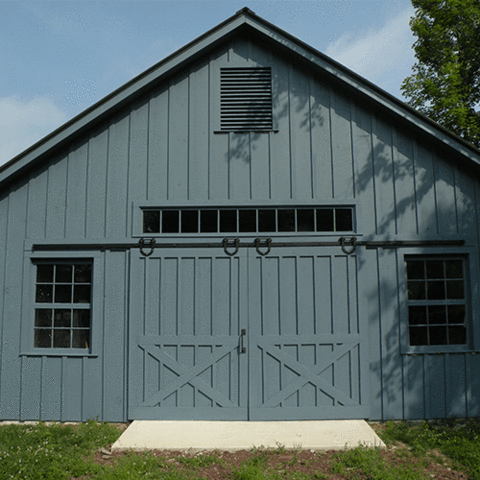
Thank you very much for reading the post. I do hope you found it informative and useful.



